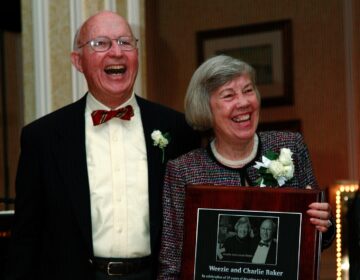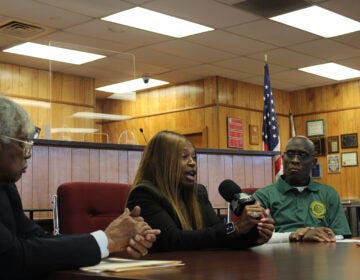‘We all have a lot more to do’: Del. business leaders get crash course on reducing racial disparities in the workforce
Delaware Chamber of Commerce members get a lesson in how to improve diversity and create a more inclusive work culture

Wilmington, Delaware (Tim Kiser/Wikimedia Commons)
For more than an hour, members of the Delaware State Chamber of Commerce got instruction on improving diversity, specifically focused on adding more Black workers to their workforce.
Tony Allen, president of Delaware State University, the state’s only historically Black college or university, said for far too long the business community in the First State and around the country has been silent on issues of race and racism.
“These changes are hard, but they are quite necessary and long overdue,” Allen said.
During an online presentation, Allen told business leaders, talking about race and racism in the workplace isn’t easy, and that’s OK.

“Being uncomfortable is important,” he said. “We will make mistakes, as we have conversations with each other. We will likely say the wrong things. We’ll not always get it right. Sometimes we’ll get mad one with another, and on balance, I think all of that is OK. What’s not OK is silence.”
Tom Horne, chamber board member and market leader for JP Morgan Chase, hosted the conversation and said his company has a number of programs designed to hire more Black employees and support other Black business owners, including work with job training programs YearUp and Zip Code Wilmington. But he said there is still lots more that can, and should, be done to reduce the racial gap in opportunity.
“We have a lot more to learn, we all have a lot more to do, and hopefully we can get some ideas today,” Horne said. “More than anything, I think this is a chance for us as a leadership community to discuss the opportunity gap that exists in Delaware, that exists in our nation, especially as it pertains to the Black community.”
Allen said he’s heard from some employers lamenting that they can’t find more people of color to hire.
“That means that you’re not looking hard enough,” he said. “There are many, many talent pools, whether that be HBCUs or other institutions that are working with young people to provide them with real skills.”
He said hiring a person of color in a key role could open up a whole network of potential employees not previously seen.
“Get proximate, get closer to those communities you want to affect,” Allen said.
Business leaders also heard from Stephanie Creary, professor at the University of Pennsylvania’s Wharton School, who talked about the effectiveness of diversity and inclusion practices in business. She said efforts to improve inclusion are hampered because most people are uncomfortable talking about race. She created a training presentation simply entitled “RACE” to force business leaders to get more comfortable even just saying the word.
“We’re only going to get better at talking about race and reduce some of the anxiety that we feel in talking about race by actually talking about race,” she said. “Many of us were taught and socialized to be ‘colorblind,’ and that means not to pay attention to differences.
But ‘colorblind’ training meant to reduce bias has had the opposite effect, she said.
“The more that we actually pretend that race isn’t a factor or that we don’t have different races, what the studies have shown is that we actually tend to engage in more biased behavior,” Creary said.
WHYY is your source for fact-based, in-depth journalism and information. As a nonprofit organization, we rely on financial support from readers like you. Please give today.





